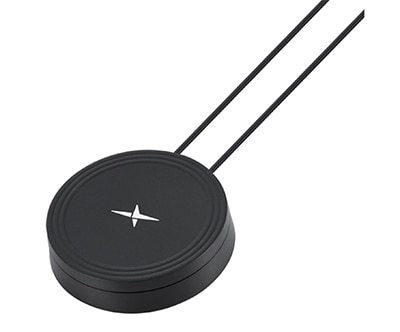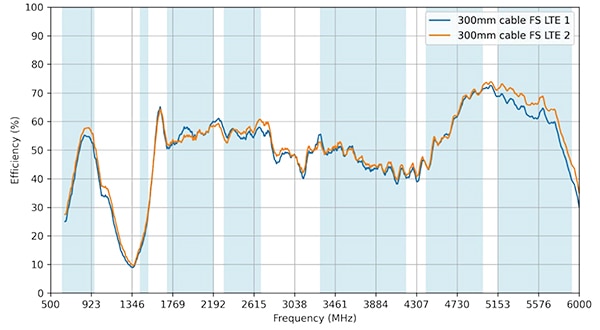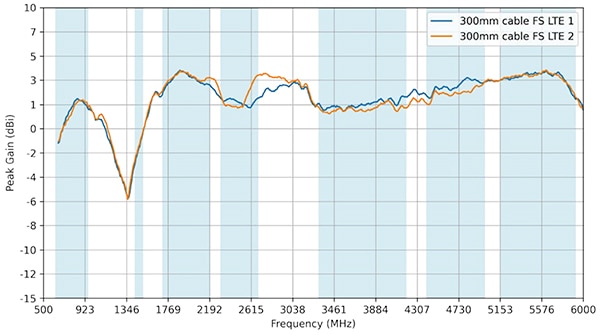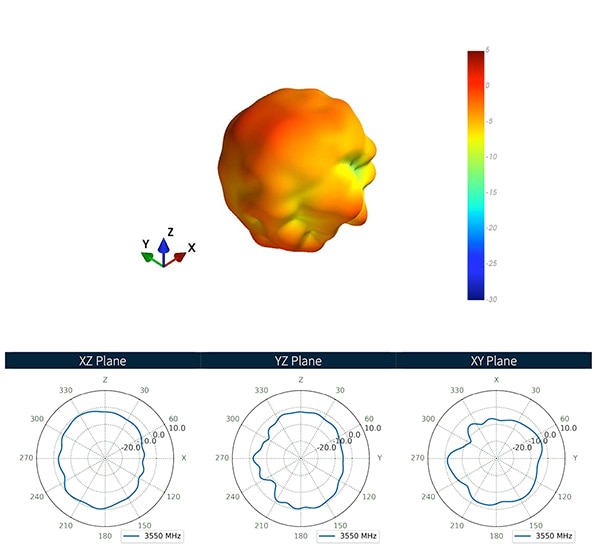Use a Compact 5G MIMO Antenna for Optimum Connectivity and Aesthetics
Contributed By DigiKey's North American Editors
2024-06-19
5G network deployments are accelerating globally for faster data rates, increased capacity, and seamless connectivity. Multiple-input multiple-output (MIMO) antenna technology is crucial for delivering on the promises of 5G, including simultaneous transmission and reception of multiple data streams, enhanced spectral efficiency, and overall network performance.
Although many antenna options exist, many applications require small, low-profile MIMO antennas that designers can fit into space-constrained systems or place in discreet locations in security, residential, retail, and other applications.
This article briefly discusses the challenges facing designers of small and discreet 5G devices. It then introduces a compact 5G/4G MIMO antenna from Taoglas that meets designers’ needs while providing wide spectrum coverage, global compatibility, and ease of use.
Applications and challenges for compact, low-profile 5G MIMO antennas
The discreet installation of small, low-profile 5G MIMO antennas can provide the data rates and coverage required in many applications. Consumer electronics and security system designers want to deliver 5G performance without compromising aesthetics. In transportation and industrial applications, compact antennas can eliminate the distracting visual impact that larger conventional antennas might have on vehicle or equipment operators. Compact antennas allow designers to add 5G connectivity more easily in smaller, self-contained applications such as digital signage, point-of-sale kiosks, and network appliances.
For applications in industrial process systems and the Internet of Things (IoT), designers can easily add small 5G MIMO antennas to provide 5G network connectivity for remote locations or serve as a backup connectivity option for existing communications networks.
The use of multiple antennas and the associated processing allows individual data streams to be multiplexed to improve link reliability and compensate for signal loss to maintain high data rates. MIMO antennas counter signal degradation due to high path loss in millimeter-wave communications and multipath fading exacerbated with small cell deployments widely used in 5G networks.
Although MIMO technology offers significant benefits, it also poses implementation challenges. These challenges include minimizing mutual coupling and maximizing isolation among the elements of a MIMO antenna to ensure optimal radiation performance.
Earlier MIMO antenna designs addressed these concerns by increasing the physical distance between the antennas. This left users to cope with the installation of large antenna systems. As designers look to accommodate space-constrained installations, the physical space for placing multiple antennas in a MIMO antenna design becomes much more limited. As a result, effects like mutual coupling and reduced efficiency become more pronounced.
Overcoming these challenges requires new approaches involving more advanced materials, decoupling methods, miniaturization, and optimized ground-plane design.
A simpler solution to 5G antenna installation
An excellent example of the application of new approaches is the Taoglas MA322.A.001 Comet series MIMO antenna (Figure 1). This device delivers 5G MIMO performance in a puck-like, low-profile form factor measuring 80 x 18.1 millimeters (mm) and weighing 113 grams (g).
 Figure 1: Designed to be easily and discreetly installed with magnetic or adhesive mounting, the MA322 5G MIMO antenna measures only 80 x 18.1 mm. (Image source: Taoglas)
Figure 1: Designed to be easily and discreetly installed with magnetic or adhesive mounting, the MA322 5G MIMO antenna measures only 80 x 18.1 mm. (Image source: Taoglas)
The MA322’s form factor and weight enable its use in applications where large and heavy antennas are not practical or desired. It is also designed for a magnetic or adhesive mount, providing 5G connectivity in existing applications where drilled mounting holes are undesirable. These include applications like first responders and emergency services vehicles that need upgraded 5G communications. To simplify the antenna's connection to the users’ application, each of this antenna’s MIMO 1 and 2 connections comes with a 2-meter (m) low-loss cable with high-frequency subminiature version A (SMA) connectors.
Suited for indoor or outdoor installation, the antenna enclosure has an operating temperate range of -40°C to +85°C and is IP67 rated, providing dust-tight protection and protection against water ingress when immersed in up to 1 m of water. Its enclosure is fabricated with acrylonitrile styrene acrylate (ASA) plastic to provide the ultraviolet (UV) stability needed for long-term outdoor installations. A separate 3M foam pad is also included, enabling adhesive mounting on non-magnetic surfaces.
The antenna complies with European Union (EU) Registration, Evaluation, Authorisation, and Restriction of Chemicals (REACH) regulations and EU Restriction of Hazardous Substances (RoHS) legislation.
High performance with worldwide cellular frequency support
Designed with two high-performance 5G/4G antennas, the MA322 supports worldwide 5G cellular frequencies and 4G, 3G, and 2G bands from 617 megahertz (MHz) to 5925 MHz. It does so while delivering performance characteristics typically lacking in small antennas.
With its low return-loss characteristics and voltage standing wave ratio (VSWR) specification value of zero, the MA322 antenna operates at typical small-antenna efficiency levels without sacrificing signal performance (Figure 2).
 Figure 2: An innovative design allows the MA322 to deliver efficiency levels previously unobtainable in similar-sized puck-shaped antennas. (Image source: Taoglas)
Figure 2: An innovative design allows the MA322 to deliver efficiency levels previously unobtainable in similar-sized puck-shaped antennas. (Image source: Taoglas)
Designed to meet designers’ long-range communications and path-loss mitigation requirements, the MA322 antenna achieves stable peak gain levels (Figure 3) and excellent omnidirectional radiation patterns (Figure 4) across its entire operating frequency range. Its maximum peak gain is 4.2 decibels relative to isotropic (dBi), and its operating frequency range includes the 3550 MHz frequency band, which lies within the 5G bands frequently used in the United States and Europe.
 Figure 3: The MA322 meets the demand for stable peak gain, achieving a specified maximum peak gain of 4.2 dBi. (Image source: Taoglas)
Figure 3: The MA322 meets the demand for stable peak gain, achieving a specified maximum peak gain of 4.2 dBi. (Image source: Taoglas)
 Figure 4: The MA322 offers highly uniform radiation patterns across its operating frequency range, including at the 3550 MHz frequency band shown here. (Image source: Taoglas)
Figure 4: The MA322 offers highly uniform radiation patterns across its operating frequency range, including at the 3550 MHz frequency band shown here. (Image source: Taoglas)
With its stable performance and easy installation, the MA322 antenna offers designers a ready 5G installation solution for an expanding array of applications.
Conclusion
The availability of more advanced materials and design methods has enabled the development of small MIMO antennas from Taoglas that can achieve the levels of gain and efficiency required for 5G operation. This compact, low-profile device allows designers to add 5G connectivity to applications with limited space where security, aesthetics, and ease of use are required.

Disclaimer: The opinions, beliefs, and viewpoints expressed by the various authors and/or forum participants on this website do not necessarily reflect the opinions, beliefs, and viewpoints of DigiKey or official policies of DigiKey.







